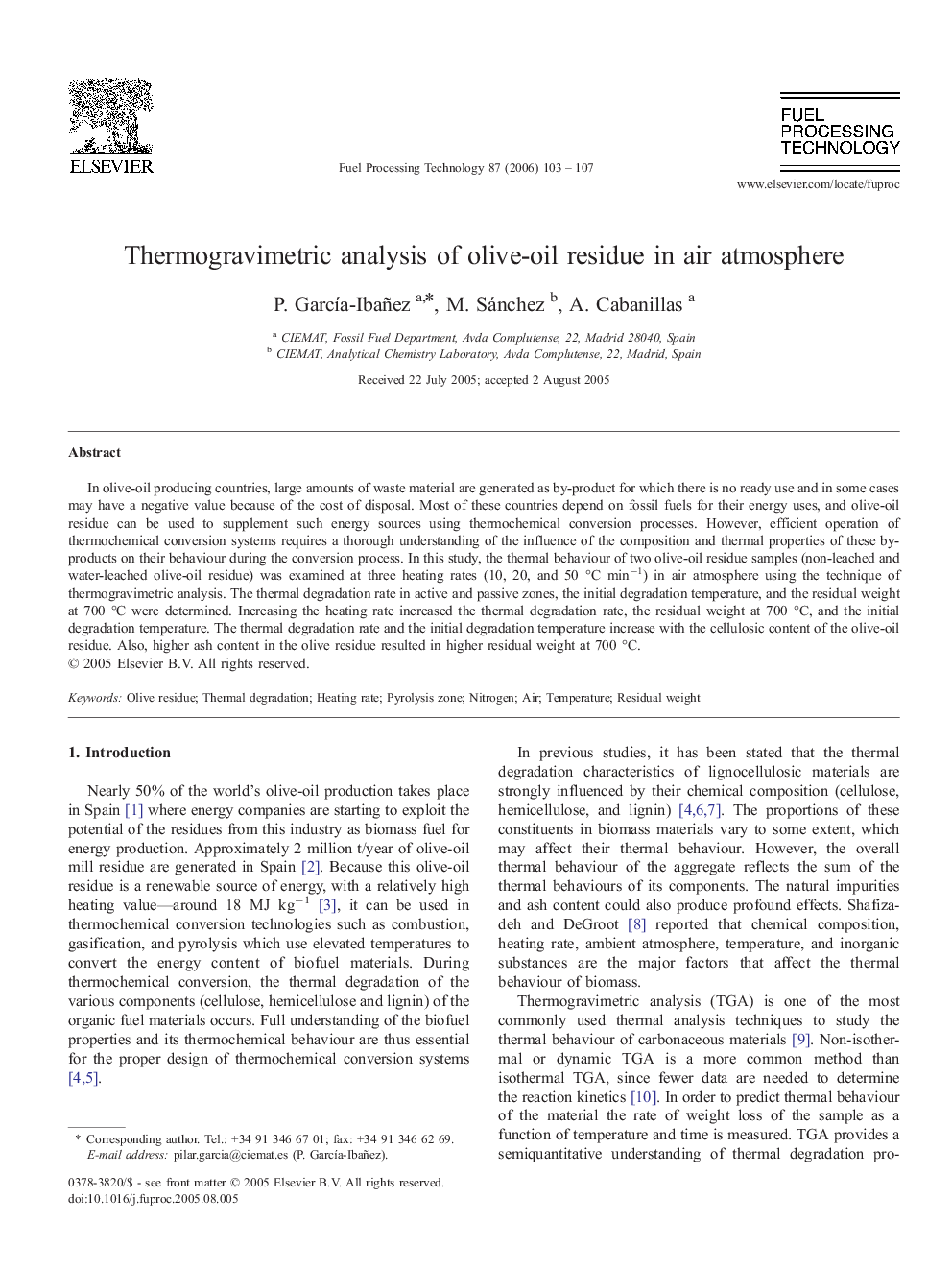| Article ID | Journal | Published Year | Pages | File Type |
|---|---|---|---|---|
| 211586 | Fuel Processing Technology | 2006 | 5 Pages |
In olive-oil producing countries, large amounts of waste material are generated as by-product for which there is no ready use and in some cases may have a negative value because of the cost of disposal. Most of these countries depend on fossil fuels for their energy uses, and olive-oil residue can be used to supplement such energy sources using thermochemical conversion processes. However, efficient operation of thermochemical conversion systems requires a thorough understanding of the influence of the composition and thermal properties of these by-products on their behaviour during the conversion process. In this study, the thermal behaviour of two olive-oil residue samples (non-leached and water-leached olive-oil residue) was examined at three heating rates (10, 20, and 50 °C min− 1) in air atmosphere using the technique of thermogravimetric analysis. The thermal degradation rate in active and passive zones, the initial degradation temperature, and the residual weight at 700 °C were determined. Increasing the heating rate increased the thermal degradation rate, the residual weight at 700 °C, and the initial degradation temperature. The thermal degradation rate and the initial degradation temperature increase with the cellulosic content of the olive-oil residue. Also, higher ash content in the olive residue resulted in higher residual weight at 700 °C.
